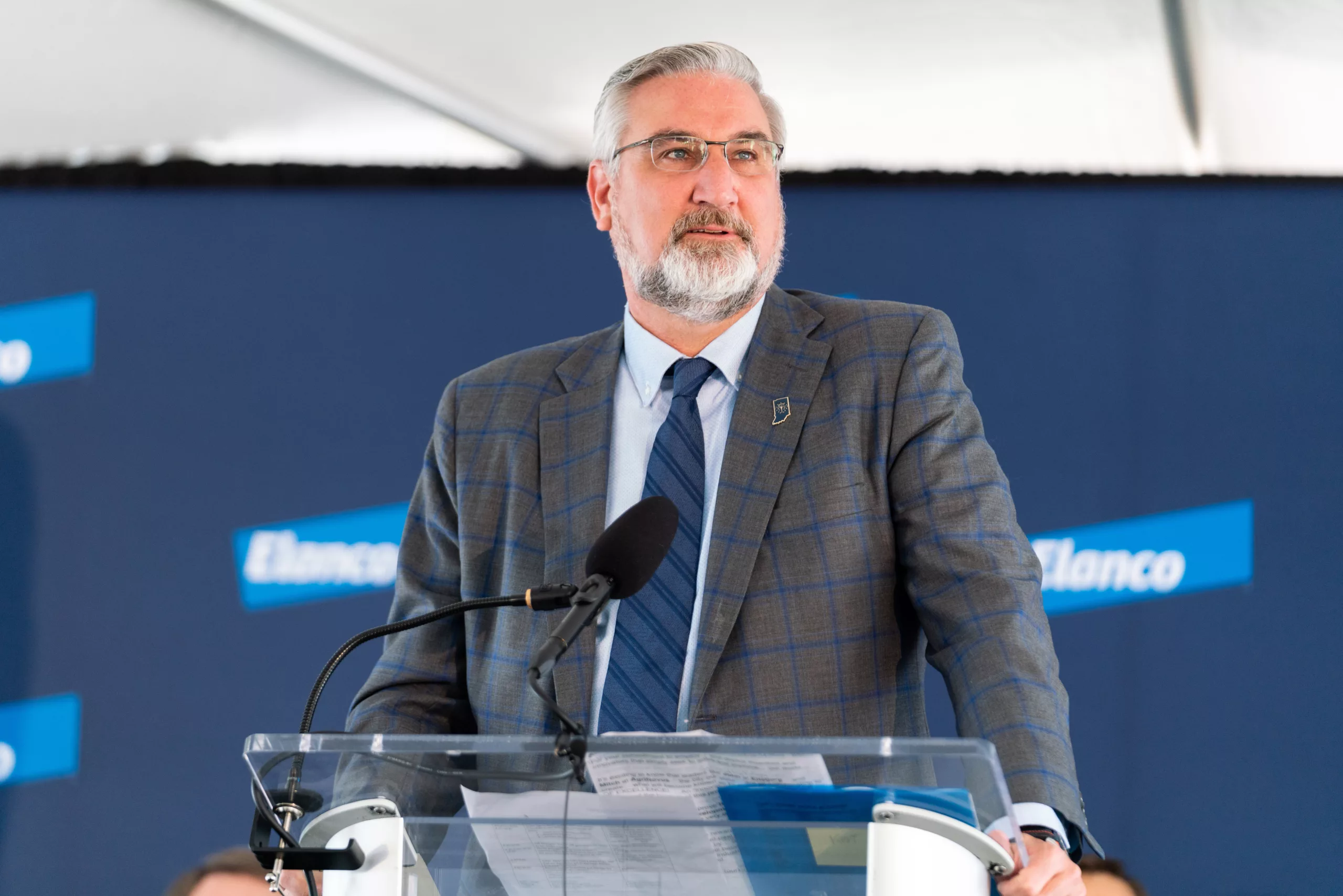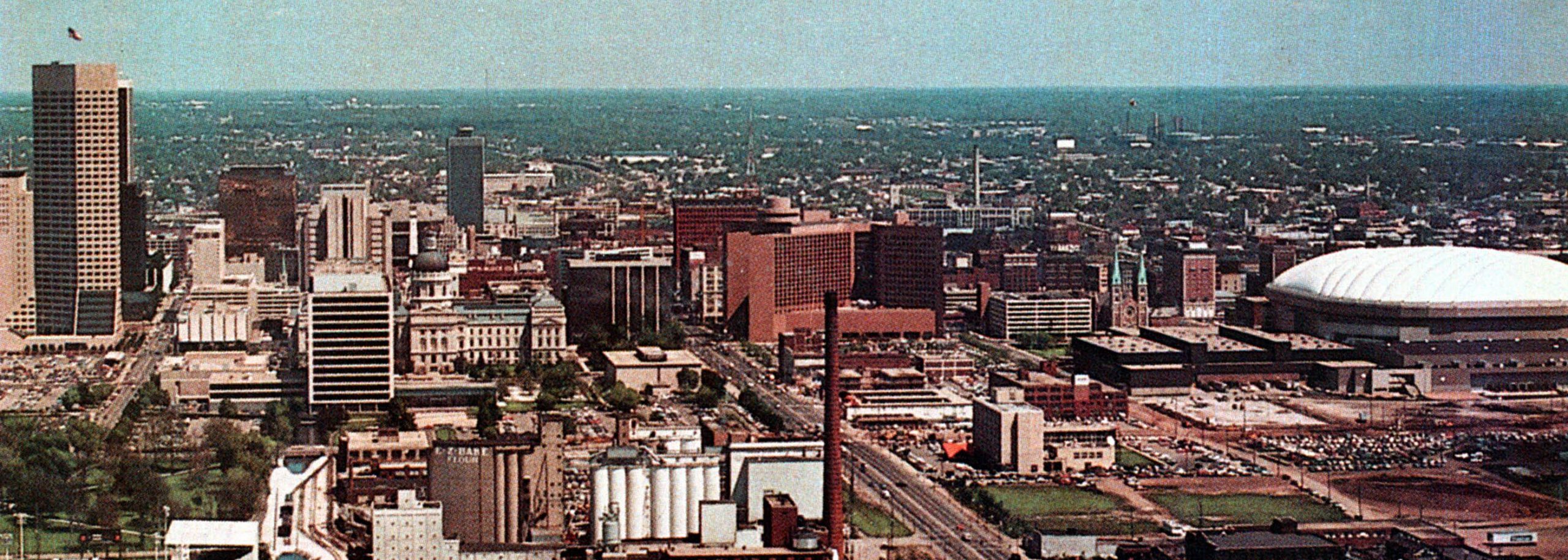
History
White River State Park was created as a unique partnership between the state of Indiana, city of Indianapolis, and community partners who wanted to provide Indianapolis residents with more greenspace, revitalize the downtown, and compliment the Indianapolis Convention Center and IUPUI. As the area where the park now stands deindustrialized in the 1970s, those partners went to work.
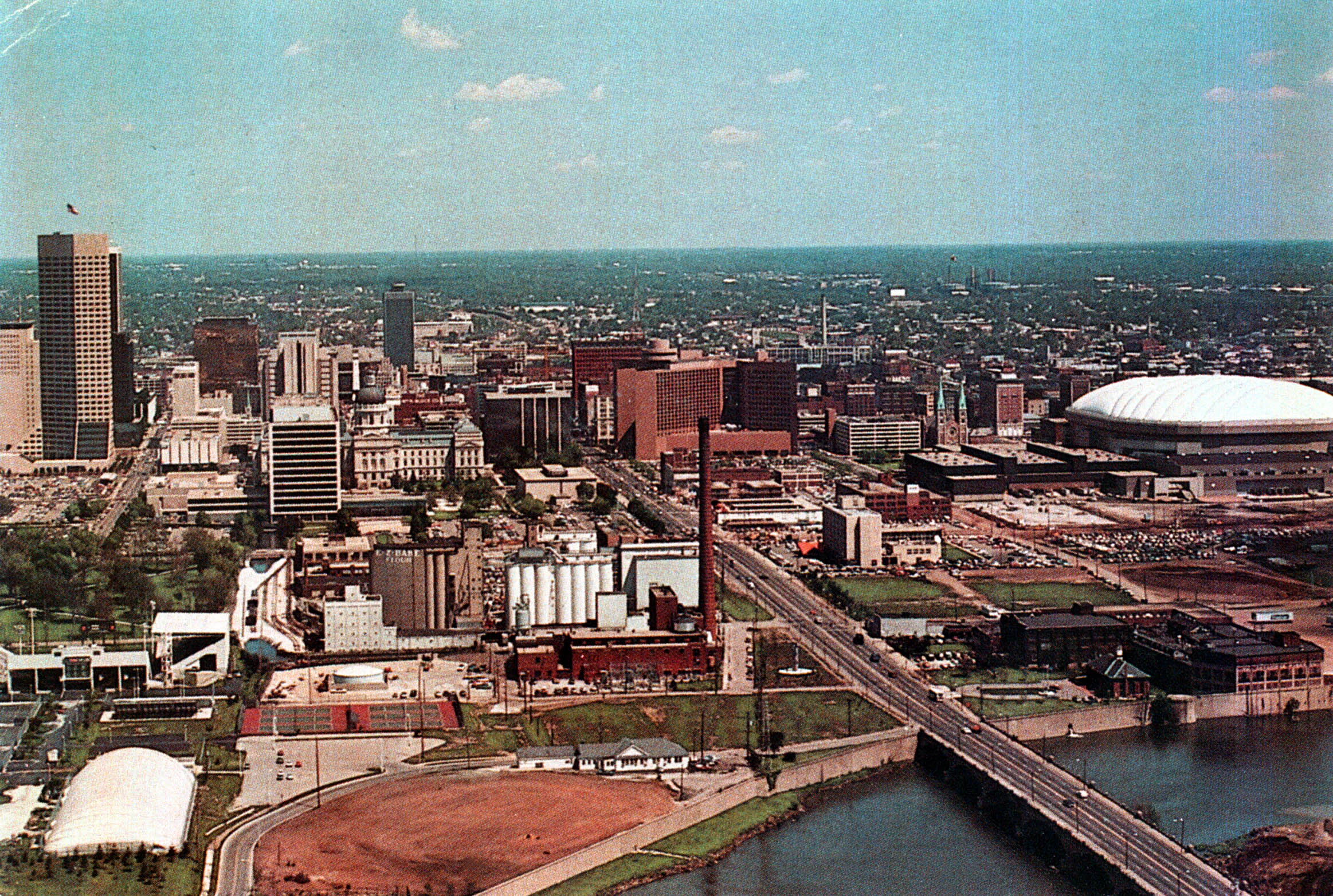
In 1978, the Lilly Endowment funded preliminary architectural planning by the firm Browning Day Pollak Associates. The following year in 1979, the Indiana General Assembly created the White River State Park Development Commission. The Commission operates as a quasi-governmental agency and is separate from the Indiana Department of Natural Resources.
In 1981, the Commission presented the “park master plan” to the public. Eight different firms presented models with their ideas of developing the 250-acre space, including amusement park rides and a 7,800-foot tower, which were never built.
The park’s executive director, Bruce C. Brown, presented the estimated $185 million budget and announced that 60% of the cost would come from private sector support. Other income would come from income-producing facilities such as parking structures. The commission also received a $5 million grant from Lilly Endowment.
From 1980-1981, the original Washington Street Pumping Station was refurbished and made into a visitor center for the park
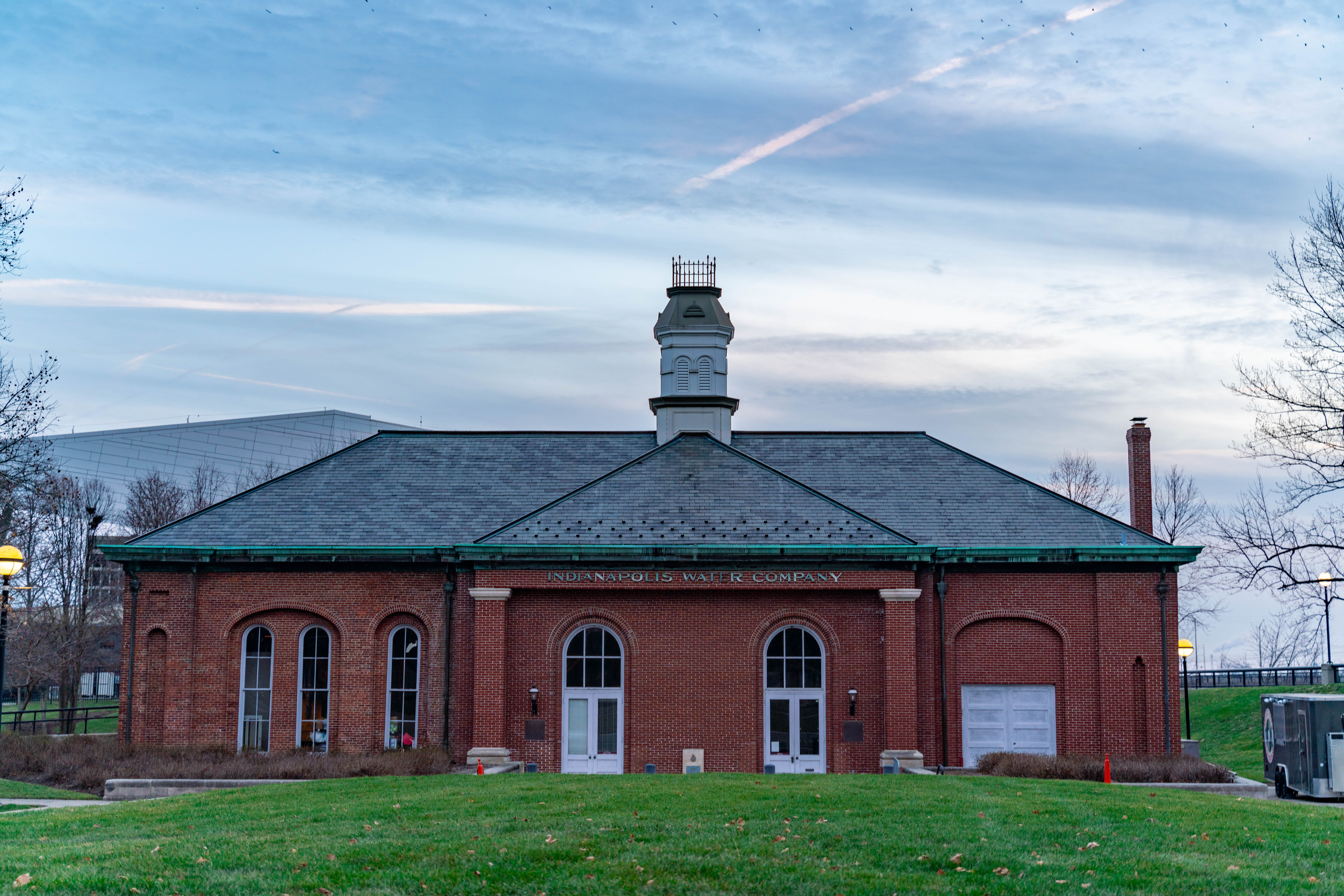
In 1980, The White River State Park Commission purchased Oscar C McCulloch School No. 5. After negation with the Historic Landmarks Foundations, the park agreed that a replica of the façade of the building would be installed in the new Indiana State Museum.
The first White River State Park Games were held in 1983, with over 5,000 amateur athletes participating in the three-day event. The games were the first major activity to focus statewide attention on the park.
Construction began in 1984 to reroute Washington Street, creating the Washington Street Pedestrian Bridge and making way for the Indianapolis Zoo to come to become the first attraction at White River State Park.
In September of 1985, the zoo broke ground and in 1987 moved to the new facility. Their doors opened in 1988, starting to a decade of expansion as they created facilities that mimicked the animals’ native habitats.
The River Promenade pedestrian walkway opened along the upper bank of the White River in 1988. The Commission built the walkway from Indiana limestone at a cost of $1.3 million. That same year, the $12 million National Institute for Fitness and Sport opened to the public.
Building on the theme of a cultural park, The Eiteljorg Museum of American Indians and Western Art opened its doors in June 1989 and is the largest collection of Native American art east of the Mississippi River.
Tragedy struck the park on September 11, 1992, when a plane carrying four prominent community leaders – park executive director Robert Welch, Frank McKinney, John Weliever, and Michael Carroll – collided with a private plane on the way Columbus, Ohio. All four men were instrumental in the park’s development. A memorial honoring their memory was placed in the park near the Old Washington Street Bridge.
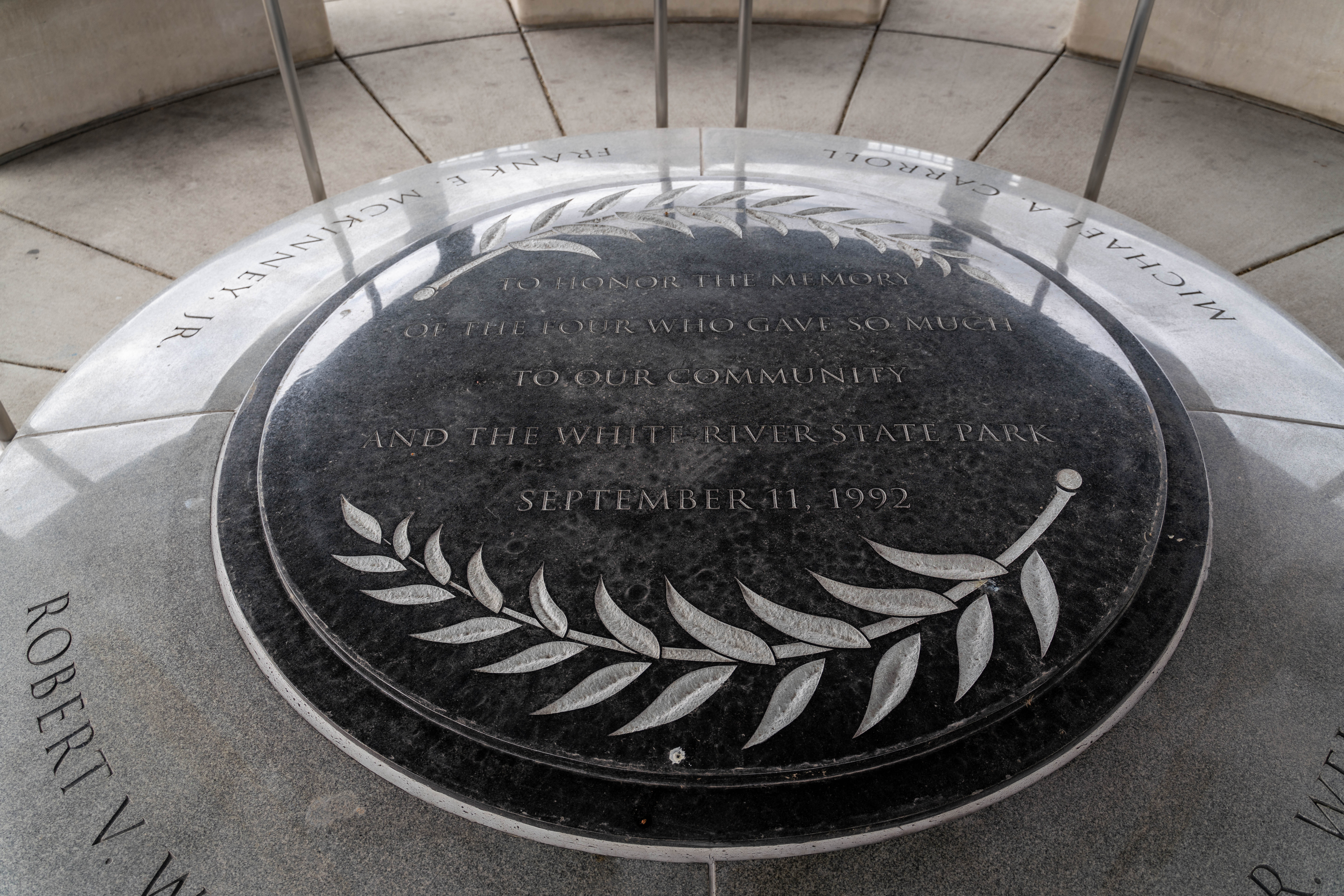
In 1996, the White River State Park Development Commission approved a $6.4 million bid to build Indiana’s first IMAX theater on the site formerly occupied by the Acme-Evans Company. The plan was for the theater to share the site with the future Indiana State Museum, pending funding from the Indiana General Assembly.
Later that year in July of 1996, the Indianapolis Indians baseball team moved from Bush Stadium on the west side of the city to Victory Field, which was built on the former site of the Kingan Meatpacking plant.
The Indianapolis Zoological Society broke ground on the White River Gardens in 1997. The botanical garden merged with the Indianapolis Zoo in 2006.
In 1999, the NCAA Headquarters opened after the organization relocated from Kansas City, where it had been since 1952. The following year in 2000, the NCAA opened the NCAA Hall of Champions, an interactive museum dedicated to providing a greater understanding of the NCAA and its membership of colleges, universities, and student athletes.
In 2002, the Indiana State Museum opened, being built around the IMAX theater. The museum’s mission is to showcase the stories, events, and characters that have helped shape Indiana’s history.
The Lawn at White River State Park opened in 2004 on the former site of the Beveridge Paper Company with a temporary stage for concerts and events. The stage had to be built each spring and taken down in the fall. The new TCU Amphitheater at White River State Park opened in 2021 featuring a capacity of 6,000 and has become a premiere concert destination.
In 2020, Elanco chose Indianapolis for the site of its new global headquarters, which will be built at the site of the former GM Stamping Plant. Adjacent to that project, White River State Park is developing a 15-acre extension that will be bounded by Washington and Oliver Streets on the north and south and by a rerouted White River Parkway and the White River on the west and east. The park extension is the largest development of the park since the 1990s and was instrumental in securing Elanco’s commitment to Indianapolis.
Today, White River State Park is one of Indiana’s most visited attractions, welcoming nearly 3 million people to the attractions and grounds each year. The only urban state park in the country, the White River State Park campus is the proud home of the Eiteljorg Museum of American Indians and Western Art, the Indiana State Museum, the IMAX theater, home to the state’s largest movie screen, the NCAA Headquarters and Hall of Champions, the Indianapolis Zoo, Victory Field, the TCU Amphitheater at White River State Park, Military Park, The Medal of Honor Memorial, and portions of the downtown canal and Indianapolis Cultural Trail.
